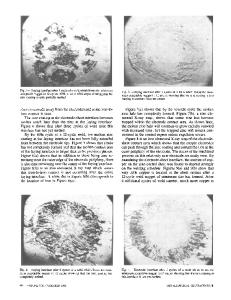Robot-assisted non-destructive testing of automotive resistance spot welds
- PDF / 1,109,023 Bytes
- 8 Pages / 595.276 x 790.866 pts Page_size
- 15 Downloads / 298 Views
RESEARCH PAPER
Robot-assisted non-destructive testing of automotive resistance spot welds Changwook Ji 1
&
Jeong K. Na 2 & Yoon-Seok Lee 3 & Yeong-Do Park 4 & Menachem Kimchi 5
Received: 5 August 2019 / Accepted: 22 September 2020 # International Institute of Welding 2020
Abstract A commercially available matrix phased array (MPA) ultrasonic imaging system was successfully integrated into a robot-assisted automated non-destructive testing (NDT) method for resistance spot weld applications. The NDT system utilizes a dual-time gate feature, where optimized time gate positions and widths were determined for near-normal incidence inspections of spot welds in thin materials. The effects of probe contact pressure and ultrasonic beam incident angle were also studied using the robot arm. Based on the current robot-assisted automated NDT results, an optimized contact pressure of 0.5 lb, and an incidence angle of ± 0.5o relative to the normal direction were determined. Under these optimum probe contact conditions, it was found that a measurement uncertainty of less than 5% can be achieved when the gate position is set to be between one-half and two-third positions of the total part thickness, along with a gate width equals to one-third of the total stack thickness. Keywords Ultrasonic non-destructive testing . Matrix phased array . Robot assisted inspection . Resistance spot welds . Advanced high-strength steel
1 Introduction For modern automotive bodies, several thousands of spot welds are typically made by welding robots. In spite of highquality spot welds, post-process destructive inspections of assembled bodies are inevitable as a part of quality control processes. As more advanced high-strength steel (AHSS) materials are used in automotive bodies, weld quality assurance has
Recommended for publication by Commission V - NDT and Quality Assurance of Welded Products * Changwook Ji [email protected] 1
Advanced Forming Process R&D Group, Korea Institute of Industrial Technology, Ulsan 44413, Republic of Korea
2
Advanced Technologies, Wyle Laboratories Inc., Dayton, OH, USA
3
Graduate School of Natural Science and Technology, Okayama University, 3-1-1 Tsushima-naka Kita-ku, Okayama 700-0082, Japan
4
Department of Advanced Materials Engineering, Dong-Eui University, Busan, South Korea
5
School of Materials Science and Engineering, Ohio State University, Columbus, OH, USA
become a more challenging issue due to unreliable destructive testing results obtained by chisel check or drive test [1, 2]. Recently, non-destructive inspection systems have been developed specifically for resistance spot welds to be used in an automotive manufacturing floor as a quality assurance tool [3–14]. The patented methodologies in references 7 and 14 are specifically based on the manual operation of the system in a production facility by an NDT operator. Currently, these ultrasonic NDT systems are designed to be operated manually, and hence human error can be a source of uncertainty. Therefore, it is thought that a robot-assisted aut
Data Loading...











